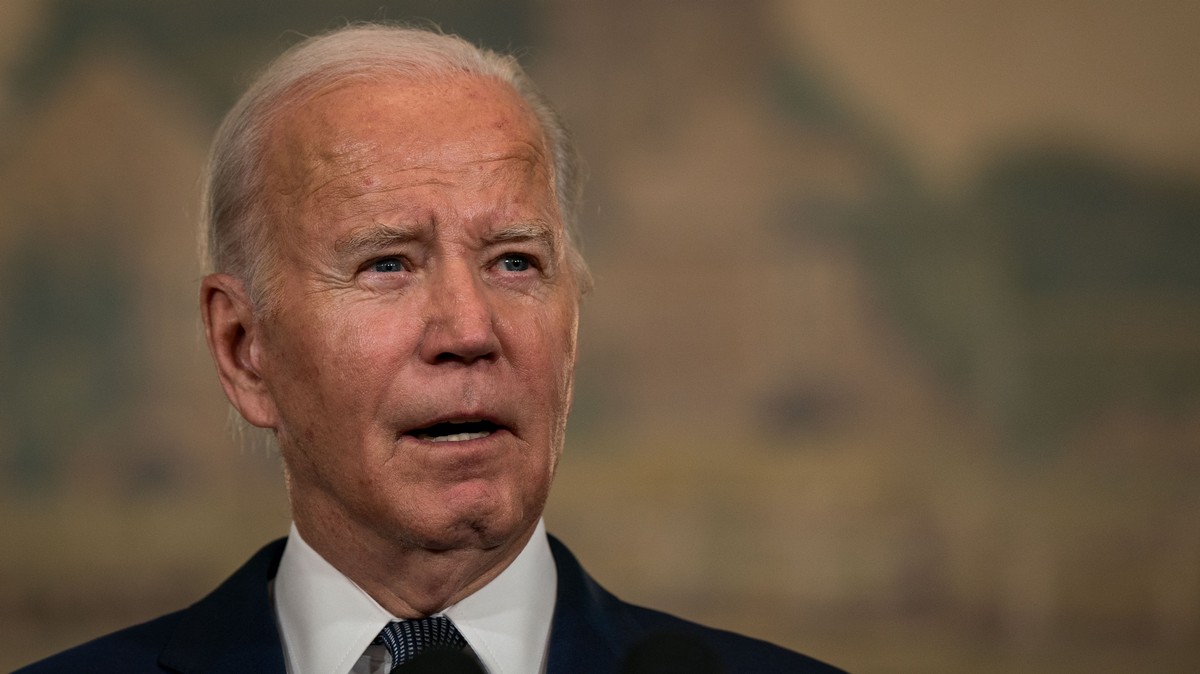The U.S. already pressured China to ban fentanyl once. Supply grew exponentially afterwards.
President Joe Biden and Chinese President Xi Jinping agreed that China would crack down on the production and exporting of fentanyl and the precursor chemicals used to make it, according to media reports.
But while Biden is painting the agreement as a win that will “save lives”, drug policy experts told VICE News they’re skeptical the measure will curb the overdose crisis—and it may make the drug supply worse.
Biden and Xi met Wednesday in San Francisco, where both leaders were in town for the Asia-Pacific Economic Cooperation summit. According to the New York Times, China will go after the exporting of illicit fentanyl into the U.S. and the manufacturing of precursor chemicals, which are being used to make fentanyl and smuggle it into the country from Mexico.
China, which has one of the largest chemical industries in the world, already banned the production and sale of finished fentanyl in 2019, under pressure from former President Donald Trump. Prior to that, most fentanyl came to the U.S. directly from China. While the ban resulted in a dramatic drop in fentanyl coming to the U.S. from China, there is now more of it than ever entering the country. Using precursor chemicals from China and India, Mexican cartels began making the illicit opioid themselves, with Customs and Border Protection reporting that fentanyl seizures have increased more than 800 percent since 2019. After the ban, other novel synthetic drugs, like xylazine—the animal sedative used to make tranq dope—and super potent opioids and benzodiazepines became more prominent in the drug supply. Now, tranq, which has been linked to wounds so horrific they’re causing people to have amputations, has spread around the country.
“It’s probably only a question of time before much more toxic and devastating xylazine mixed with fentanyl also takes over the West Coast retail markets. and that will happen faster if wholesale fentanyl supplies become more expensive or difficult to get,” said Philippe Bourgois, professor of psychiatry and anthropology at the University of California at Los Angeles.
The agreement comes as more than 109,000 Americans died of an overdose in 2022, with over 73,000 deaths linked to fentanyl. The crisis has been whipped into a moral panic by Republicans, with many blaming it on Biden’s “open border,” despite the fact that most people smuggling drugs into the U.S. are Americans.
The hypervigilance around fentanyl among law enforcement is likely what has spurred the increase in tranq, added Claire Zagorski, a graduate research assistant at University of Texas at Austin.
“The hotter and hotter it is, the more dangerous it is to move and produce, the riskier it is, the more expensive it is. So it makes perfect business sense on the supply side to try to offset fentanyl production to something that’s less monitored and less prohibited. And so far, tranq has been filling that hole.”
For decades, heroin, which comes from poppies, was the dominant opioid in the illicit drug supply. But for the last 10 years, North America has dealt with a number of significant changes, including the introduction of fentanyl and tranq, as well as other novel synthetic drugs that haven’t yet been banned by the government.
Because these drugs are made in labs, rather than as a result of growing crops, Zagorski said it’s easier for cartels to adapt.
“There’s millions, if not billions, to be made from selling drugs and the demand has not waned,” she said.
Ben Westhoff, author of the book Fentanyl Inc. which investigated China’s fentanyl industry, said another problem with simply banning precursors is that some of those chemicals are used to make legitimate products.
In order for the deal with China to have teeth, he said the government would have to require Chinese manufacturers to verify that they’re selling these chemicals to legitimate companies.
Even then, “I’m sure there’s plenty of ways to circumvent that,” he said.
He said the ban could cut into the cartels’ profitability by making it more expensive to produce fentanyl, but “the trade would just probably migrate to India, or other countries that don’t have these laws.”
Zagorski said the problem with supply-side interventions is that they don’t address the demand for these drugs.
“If we can figure out how to create a safe supply domestically so that people using drugs can get that… they aren’t being pushed back to this increasingly unpredictable toxic drug supply.”
She said Americans also need to consider what the U.S. is giving up on its end of the deal. According to the Times, the U.S. will lift sanctions on China’s forensic police institute, a government entity that’s been accused of human rights abuses, including collecting the DNA of Uyghurs without consent.
“Are we selling something that is going to have really horrible consequences for marginalized and minoritized people in China for something that isn’t going to actually make a difference on our end?”
link: https://www.vice.com/en/article/wxjbnb/fentanyl-deal-us-china-biden


what if fix the issues that lead people to opioid use
Yes. And stop the criminalization of being a drug addict/user so it can be easier to end the viscious circle. Help the people to get off of it and dont punish them for using it.
Exactly. It shouldn’t be a crime to harm yourself, it should only be a crime to harm others. Some drugs can increase the chances that you’ll hurt others, so I’m fine with people being held until sober if caught using those.